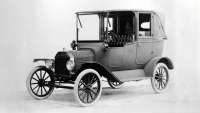Q: How many car accidents have occurred in the past year in Australia?
A: Car accident statistics Australia historically focused on the casualty rate, so it’s difficult to determine how many car accidents in Australia per year there are, but the total will be far greater than anything generally quoted.
From May 2023 to May 2024, there have been 1303 fatal car accidents, which is a rise of 10.4 per cent for the same time period the year prior.
Transport NSW defines an accident as being ‘any unplanned event involving a road vehicle on a road that results in death, injury or towed vehicle and is reported to the police’.
How do we get all of the data? Car crash statistics Australia is reported to the Australian Road Deaths Database and National Crash Database by state and territory governing bodies, like Transport for NSW, Department of Transport Victoria, Queensland Department of Transport and Main Roads, Western Australian Police, Department of State Growth (TAS), Department of Transport (NT) and Transport Canberra and City Services Directorate.
Often this data is then collated into easy-to-read snapshots, as found on the Bureau of Infrastructure and Transport Research Economics (Bitre) website.
.jpg)
Australia has stringent safety and road rules to minimise the risk while driving but we have long roads and that means drivers spend a fair bit of time behind the wheel.
So, it’s no surprise that in terms of fatalities per 10,000 registered vehicles in 2022: Australia ranked 13th out of the 24 nations with available data. Not the worst ranking but certainly, not the best.
How many car accidents in Australia per day?
2024 hasn’t started off well with the current annual death toll sitting at 732 (as of May) – which is 128.2 per cent higher than the National Road Safety Strategy 2021-2030 target of 571 deaths per year. Assuming that one death equals one accident, there are roughly 4.8 fatal accidents on average per day.
When are you most at the risk?
The most dangerous time to be driving is, surprise surprise, at night. Specifically, between the hours of 7:00pm – 10:00pm as 34 per cent of deaths occur during this time. The safest time seems to be between the hours of 6am – 9am as it only accounts for nine per cent of deaths.
.jpg)
Approximately 65 per cent of road deaths occur in regional and remote areas. The most dangerous time of year to be on the road varies between states but in general March and the winter months tend to have the highest number of fatalities. There is also a spike for road deaths during the month of December, which isn’t surprising given how many people travel at that time of year.
There are more passenger vehicles on the road than any other type and they account for 519 (50.73 per cent) of all road deaths. A motorcycle accident is the next highest at 249 (24.34 per cent), then light commercial vehicles at 163 (15.93 per cent).
Following a fair way behind are truck accidents as they account for only 46 (4.5 per cent) of road deaths and bicycles account for 35 (3.42 per cent).
Does it matter what type of road is travelled? Yep. And arterial roads are the most dangerous (they’re the roads that connect to/rank underneath freeways/highways). Main roads accidents were the next highest and a freeway accident alone, 365 deaths have been recorded.
.jpg)
What part do demographics play in road safety statistics Australia?
P-plate crash statistics show there were 130 deaths in 2022, which is a decline from the 188 P Plater deaths recorded more than a decade ago in 2012. Male P Platers had a higher death toll at 97 and females sat at 33.
Males also contribute to more deaths at 100km/h speeds than females at 268 and 94 deaths, respectively.
Car crash statistics by age
.jpg)
Not all accidents end in tragedy. In 2021, it was reported that there were 39,505 people hospitalised due to a traffic collision or accident and the average bed stay sat at five days. The most at-risk for injuries were those between the ages of 40 – 64 years old as they accounted for 13,026 of the hospitalisations.
The causes of car crashes
Experts almost always agree there are five factors that increase your chances of car accidents in Australia, and subsequent injury or death.
Drink Driving
Drug Driving
Not wearing a seatbelt
Speeding (speeds higher than posted limit or appropriate for conditions) – the most dangerous posted speed limit is 100km/h and accounts for 362 deaths. The next highest is surprisingly the 60km/h posted limit with 231 deaths.
Fatigue – 20 per cent of all fatal road crashes in Victoria involve driver fatigue, while Queensland estimates that sleepiness contributes to 20–30 per cent of all deaths and severe injuries on the road.
**Fatigue is four times more likely to contribute to impairment than drugs or alcohol**
It seems obvious but the odds of dying in a car crash Australia are lowered significantly if your vehicle is newer and has better safety technology.
.jpg)
Looking at road accident statistics Australia is sobering but here are some basic tips to minimise your risk of having an accident.
Stay alert and minimise distractions. Lower your music. Put. Your. Phone. Down. Seriously – there is no text, meme, email or call that is worth your life.
Remember the signs of tiredness and pull over/take a break when you feel them: yawning, rubbing tired eyes and leaning back in your seat or squirming around.
Travel with someone, when you can. Share the load of driving and keeping one another alert. Plan your journey to include rest stops, it’s not all about the destination.
.jpg)
Keep your driving window within daylight hours, whenever possible. You’re naturally tired at night, why drive when your body wants/needs rest? It could be the difference between a tragic accident today or being alive for tomorrow.
Almost everyone knows someone who has been affected by a car accident but we all still think ‘it won’t happen to me’.
Chance doesn’t care how well you plan but you can be assured that you will when the time comes. Be safe out there.








.jpg)



.jpg)


.jpg)








.jpg)

.jpg)


.jpg)